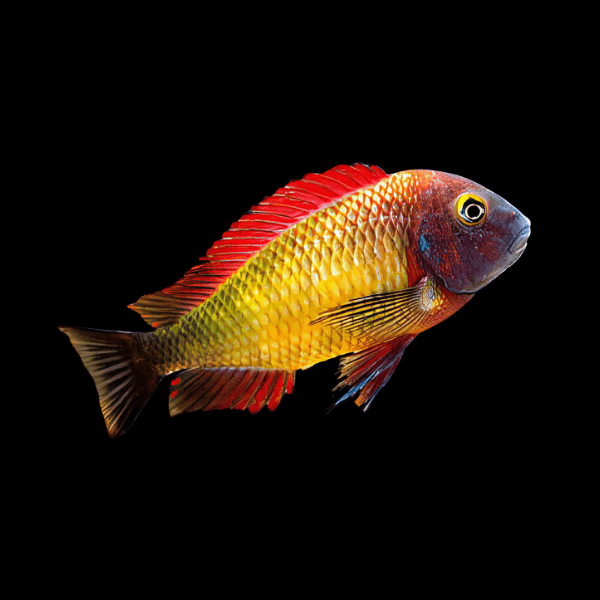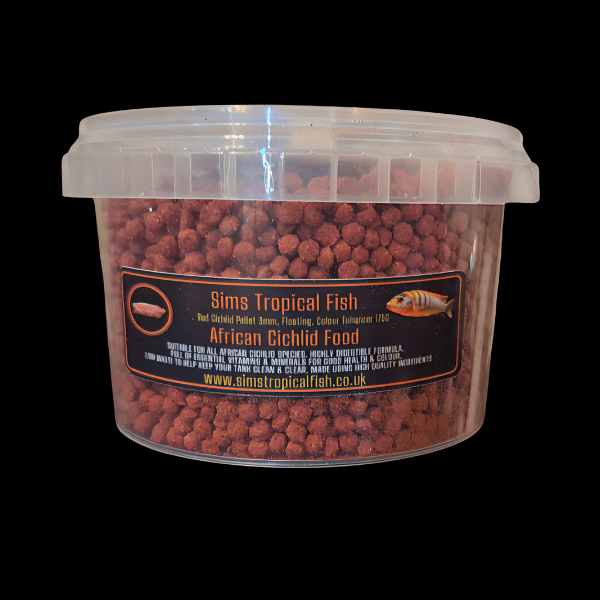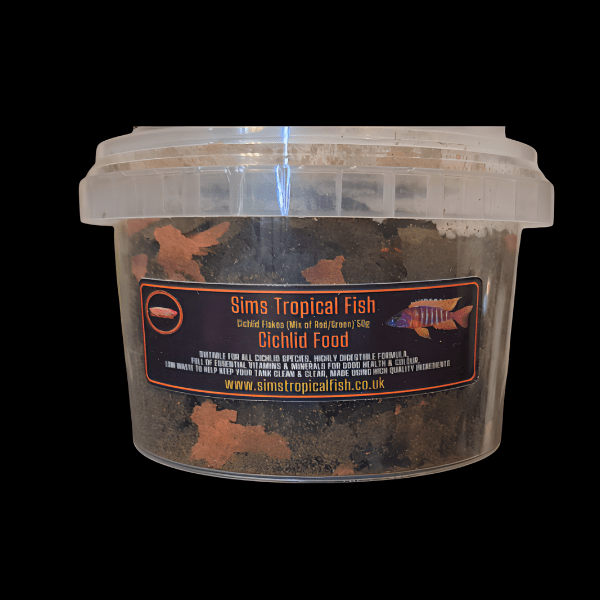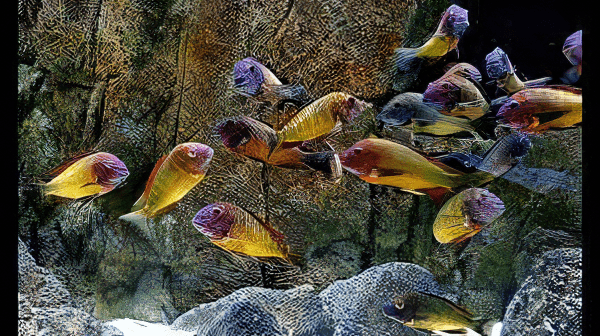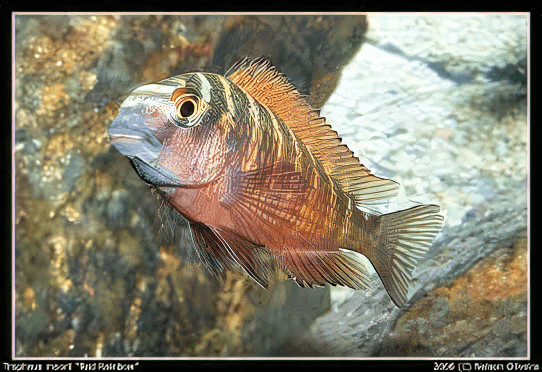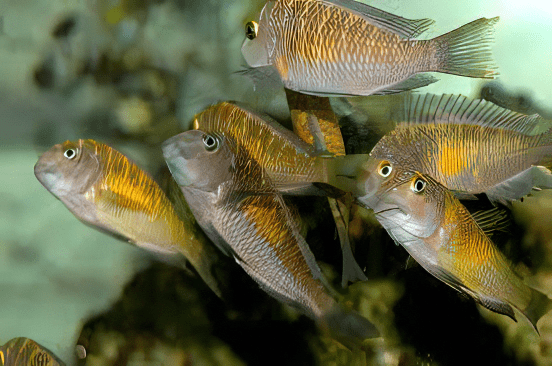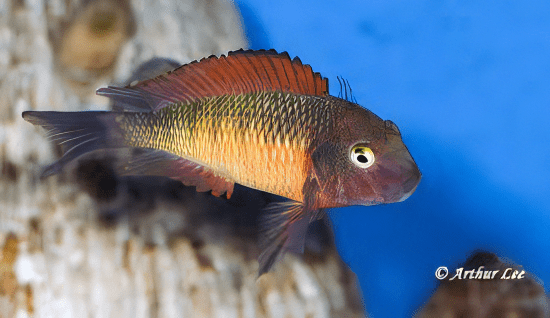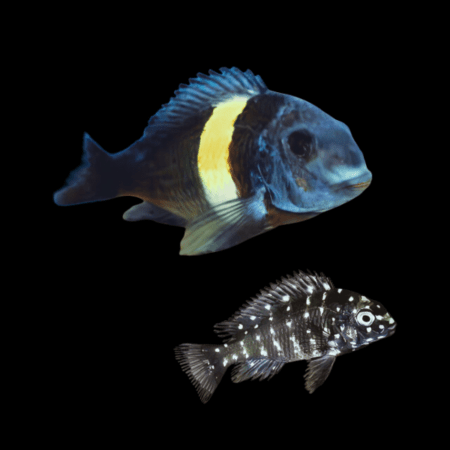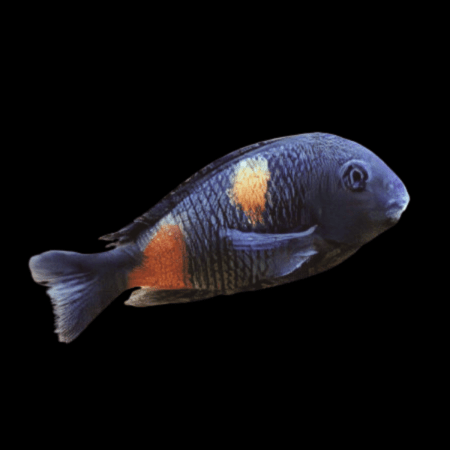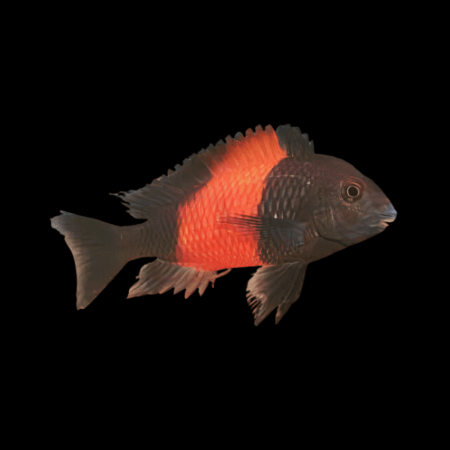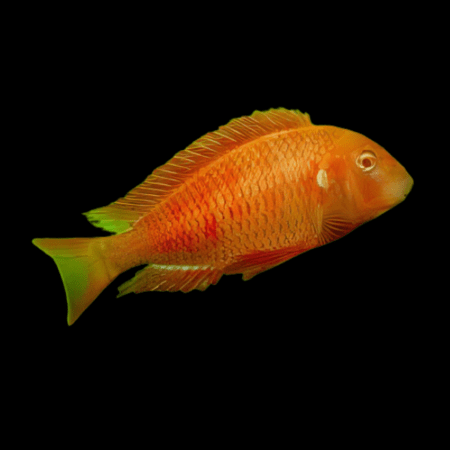Description
Tropheus Moorii African Cichlids
Overview
Distribution: Lake Tanganyika: Burundi, Democratic Republic of Congo, and Tanzania.
Maximum Size: 12cm (4.72″)
Temperature: 24-28°C
Water Parameters: Hard, alkaline conditions essential. pH: 8.0-9.0, dH: 15-25 degrees.
Compatibility: Tanganyikan cichlid community
Lighting: No special requirements
Sexual Dimorphism: Males may have longer pelvic fins, grow larger & assume adult colouration more quickly. Venting is the only way to be 100% sure.
Feeding: Spirulina flake, granules,cichlid pellets and frozen foods
Care
Tropheus Moorii are found amongst the rocky habitat of Lake Tanganyika, grazing in slightly deeper water than their relatives and often in smaller numbers. It’s best to keep Tropheus in groups of their own kind and these should be large in number to spread the aggression. Housing 15 or more of these feisty fishes requires a large aquarium and this should be 1.5m or more in length to allow individuals to avoid one another. Small groups inevitably dwindle as harassment and bullying proves too much for the females and weaker males. It is important that the entire group is added at the same time to avoid the aggression which would otherwise be directed towards any newcomers. When adding large numbers of fish in this manner, it’s important that the filtration is cycled and capable of handling the waste load. Given the investment involved, the use of a Hydra filter and bacterial inoculation with products such as Microbe Lift are strongly advised. As always, water quality should be very carefully monitored over the first few weeks. Excellent water quality must be maintained at all times, with partial water changes carried out at least once or twice a week and this may require the addition of buffers to ensure the high pH and carbonate hardness levels required. Strong water movement will ensure high oxygen levels and helps to keep the fish fit and active.
Although Tropheus can be kept in fairly bare aquaria, several separate piles of rocks should be created (instead of a continuous rocky reef) so that individuals can more easily evade one another thanks to broken sight lines. Lighting should be bright to encourage the growth of algae over the decor, which these herbivores will enjoy browsing upon. Sharp rocks (such as lava rock) should not be used as they can cause damage to the mouths of these fishes as they graze.
Aside from a tendency to kill one another best controlled by keeping them in big groups, diet is the other major factor in successful care. These fishes are very prone to bloating caused by excessive quantities of rich food and this should be considered when mixing them with other species. Prospective tank mates should be able to thrive on the same diet and this may limit selection.
Several different races of Tropheus duboisi exist such as Maswa and Burundi and these can be distinguished by the width and colour of the white band that develops with maturity. Juveniles are beautifully spotted and females retain these baby spots a little longer than their male counterparts. T. duboisi are recommended for those starting with this challenging group of fish and are less aggressive than many of their congeners.
Feeding
A staple diet based on algae such as spirulina is recommended, together with occasional feeds of high-fibre frozen foods such as Daphnia, Mysis and Cyclops. Avoid feeding these fishes too generously. Fine sand substrates may be useful in aiding gut health by providing beneficial indigestible matter.
Breeding
Males should be outnumbered with females because of their constant desire to spawn, and this harassment (which can be quite intense) will then be spread, so that no one fish bears the brunt of the males’ continual amorous attention. The trickiest part of conditioning females is ensuring they have sufficient opportunity to avoid being pestered by males. Properly kept, breeding occurs naturally and females mouth brood a small clutch (<20) of very large eggs for three weeks or more. Maternal care continues a little longer and fry are capable of feeding inside their mother’s mouth. Young fish are preferentially released in shallow water with rich algal growth and fewer predators – having rockwork reaching the surface or piles of small stones will provide suitable areas.
